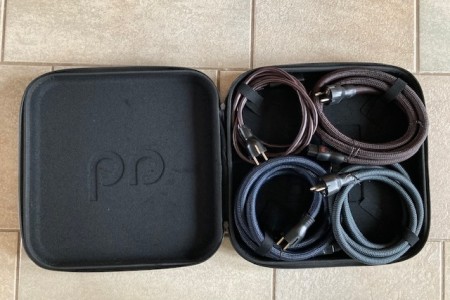Advances in Streaming Multicast and Real-time HD Video Over WLANs Deliver Greater Video Effectiveness in Schools, Hospitals, Enterprises
London, April 14, 2009 - Meru Networks has introduced the first wireless LAN solution optimised for delivering high-quality video over the new generation of IEEE 802.11n networks. Meru`s Video Services Module (ViSM) is designed to address video-delivery issues specific to 802.11n networks, which are susceptible to unpredictable loss rates that can negatively impact video quality. The module applies application-aware optimisation techniques to web streaming and real-time multicast video, the underlying technologies that enable a broad array of video applications, from wireless projection, IPTV and event simulcast to videoconferencing, telepresence and video surveillance.
"Video-based applications are becoming pervasive in schools, health-care institutions and other enterprises because they boost productivity significantly for a relatively low cost," said Vaduvur Bharghavan, Meru`s chief technology officer. "But high-definition video delivery over wireless is especially challenging because it combines the high bandwidth requirements of heavy data traffic with the delay sensitivity and loss characteristics of voice traffic. And while 802.11n dramatically increases available bandwidth, it also increases per-transmission error rates. For multicast applications this translates to lost portions of video; for web video streaming it can mean stalled video or the loss of voice-video synchronization.
Meru`s Virtualized WLAN Architecture Provides Basis for 11n Video Optimization
"The power of the Video Services Module lies in Meru`s unique virtualized WLAN architecture, which gives every client device its own dedicated wireless `port,`" Bharghavan said. "With Meru`s Virtual Port™, each client gets its own copy of the multicast application traffic, delivered at the highest possible data rate and unaffected by the transmission or power-save behaviour of other clients. In other vendors` legacy micro-cell solutions, which force all clients to share the same wireless resource, some clients will always suffer in terms of the timely delivery of multicast frames when other clients require buffering of traffic, thus causing multicast video delays for every client."
How the Video Services Module Works
The Meru Video Services Module uses several mechanisms to deliver video traffic based on application and user characteristics, allowing scaling to large numbers of concurrent video sessions without appreciably degrading user experience.
- Application-aware prioritization: synchronises the voice and video components of a video stream, adapting the delivery of each frame based on its importance to the application. Higher-priority MPEG-4 AVC/H.264 marked frames are transmitted with greater assurance of reliability and timeliness.
- User- and role-based policy enforcement: provides granular control over application behaviour (e.g., a teacher can be assigned higher priority than a student).
- Seamless video-optimised handoff: proactively reroutes the multicast delivery tree to prevent lost video frames during a transition between access points, and ensures zero-loss for mobile video.
- Multicast group management: optimises delivery to only those virtual ports whose clients are members of the multicast group, reducing network waste both wirelessly and on the wired network.
- Graphical visualisation: reveals which clients are running which applications (data, voice, video) to aid in monitoring network-wide application performance.
The Growing Role of Video in Everyday Applications
Several customers have been using Meru video optimisation techniques on their Meru 802.11a/b/g WLANs and plan to deploy the new Video Services Module. Frank Rodriguez, IT director at the University of Miami`s Miller School of Medicine, which uses Meru in its 30 buildings, said, "Video over wireless is becoming an essential component of our operation. For example, we are using a mobile robot that allows a doctor in a remote location to see and assist in medical procedures. The Meru WLAN has been remarkably stable and reliable as we`ve brought on more and more multimedia applications, and the new 802.11n video optimisation capability will let us make even more dramatic improvements in patient care." Jason Hyams, director of technology at St. Agnes Academy in Houston, Tex., has used the school`s Meru WLAN to support wireless projection in the classrooms for up to 700 concurrent users. "Using WLAN projectors means a huge saving for new classrooms. It gives us the flexibility to use the Internet, TV and whiteboard sessions all from one piece of equipment. Teachers can move around with their laptops and project everything from YouTube to Powerpoint. We will soon be deploying 11n for the first time in our science classrooms, and will look to the Meru WLAN to support new video applications and services as reliably as it has on 11a/b/g."
Pricing and Availability
The Meru Video Services Module is available in June as an add-on module to Meru`s System Director software. For a network with 100 wireless access points, the module is priced at $7,995.
Agency contacts:
Rose Ross, Omarketing Limited, London (for Meru Networks - UK and rest of EMEA) + 44 (0) 208 255 5225 rose@omarketing.co.uk
Laurence Colin, RP&Co. Paris (for Meru Networks - France) +33 (0)1 40 20 04 50
laurence.colin@rpandco.fr
Susan Rose, Rose Kommunikation & PR, Stockholm (for Meru Networks - Nordics) +46 (0)735 81 35 40 susan@susanrose.se
About Meru Networks
 Founded in 2002, Meru Networks develops and markets wireless LAN infrastructure solutions that use virtualisation to deliver pervasive, high-fidelity wireless service for business-critical voice, video and data applications. The company first introduced its award-winning virtual cell wireless architecture in 2003, and Meru products embody a complete departure from typical hub-based WLAN approaches, offering a wireless solution with levels of performance, reliability, security and cost-effectiveness previously found only in wired networking environments. Meru`s solutions have been adopted in all major industry vertical markets, including Fortune 500 enterprises, healthcare, education, retail, manufacturing, hospitality and government. Meru is headquartered in Sunnyvale, Calif., and has operations in the Americas, Europe, the Middle East and Asia Pacific. For more information, visit www.merunetworks.com
Founded in 2002, Meru Networks develops and markets wireless LAN infrastructure solutions that use virtualisation to deliver pervasive, high-fidelity wireless service for business-critical voice, video and data applications. The company first introduced its award-winning virtual cell wireless architecture in 2003, and Meru products embody a complete departure from typical hub-based WLAN approaches, offering a wireless solution with levels of performance, reliability, security and cost-effectiveness previously found only in wired networking environments. Meru`s solutions have been adopted in all major industry vertical markets, including Fortune 500 enterprises, healthcare, education, retail, manufacturing, hospitality and government. Meru is headquartered in Sunnyvale, Calif., and has operations in the Americas, Europe, the Middle East and Asia Pacific. For more information, visit www.merunetworks.com


